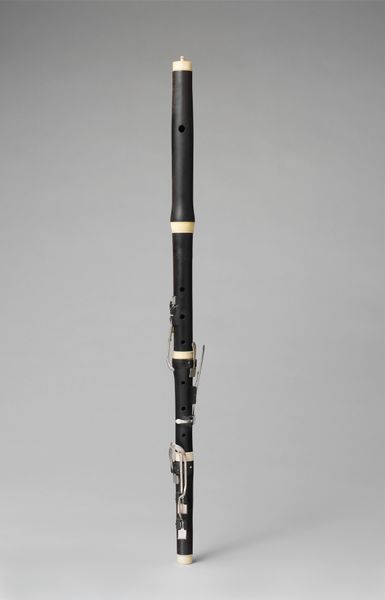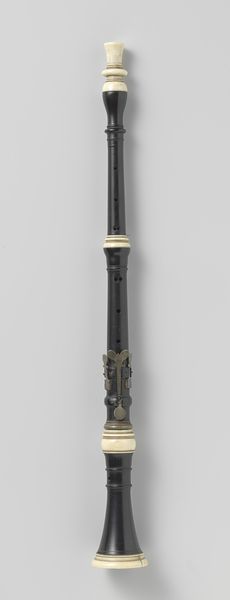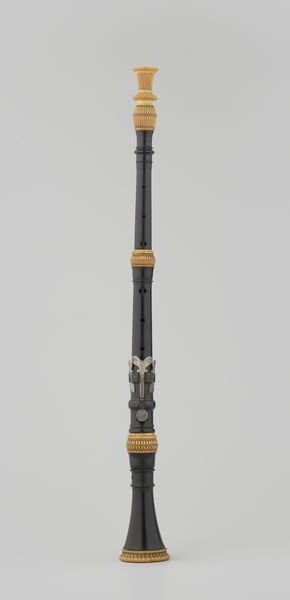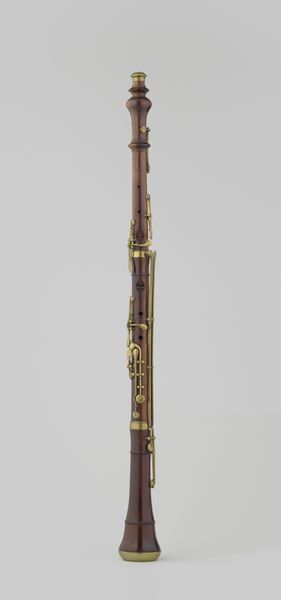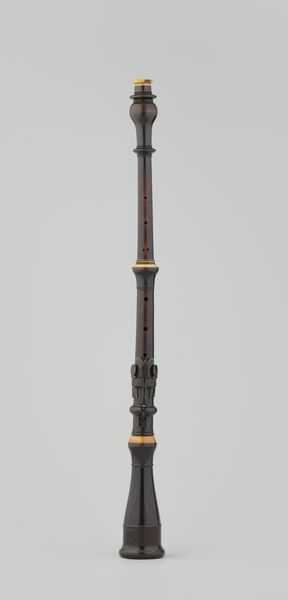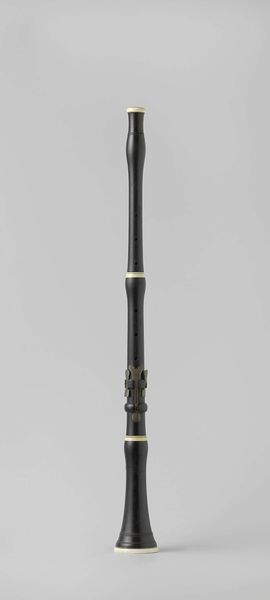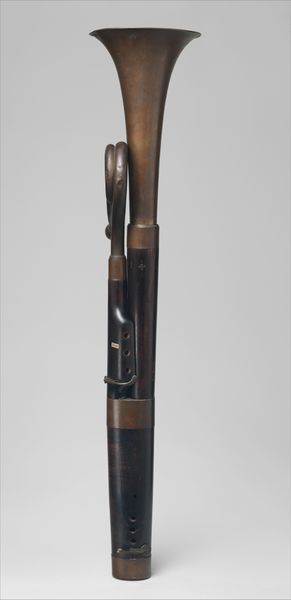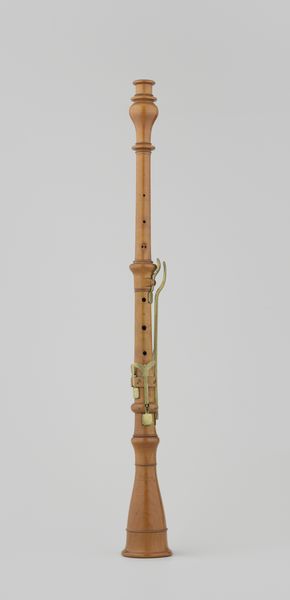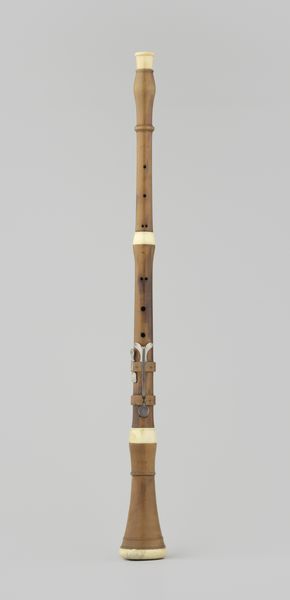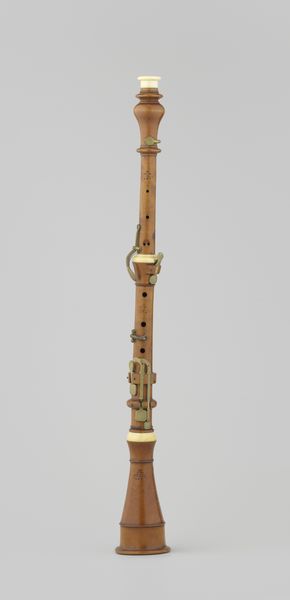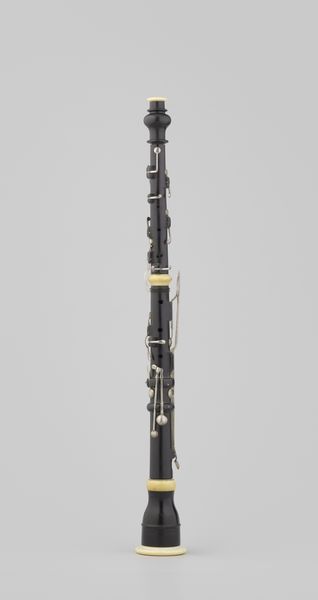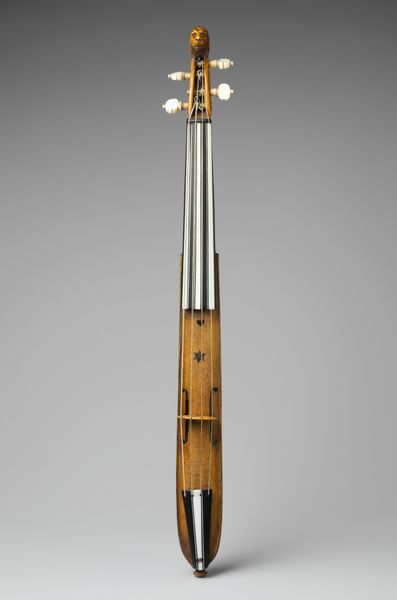
brass, wood
#
brass
#
romanticism
#
wood
#
musical-instrument
Dimensions: Length (w/o crook) 730 mm, Diameter of bell 45 mm, Upper section 348 mm, Lower section 415 mm.
Copyright: Public Domain
This Vox Humana in F was crafted by William Maurice Cahusac, most likely in London, around the turn of the 19th century. It's primarily made from wood, probably stained dark, with ivory accents and a brass key. The instrument’s elegant form results from a combination of subtractive methods, like drilling the bore and tone holes, and additive ones, such as the molded bell. The narrow bore gives this instrument its distinctive, reedy tone, very much unlike that of a modern oboe. The ‘vox humana’ stop on an organ imitated the sound of the human voice, and this oboe was meant to do the same. Cahusac was one of a family of instrument makers, who produced functional but also refined objects for a sophisticated clientele. They were catering to an emerging culture of amateur music-making. In this sense, this instrument connects to broader social and economic shifts that accompanied the Industrial Revolution. So next time you hear an oboe, remember this earlier, more intimate sound, and the craft that made it possible.
Comments
No comments
Be the first to comment and join the conversation on the ultimate creative platform.
